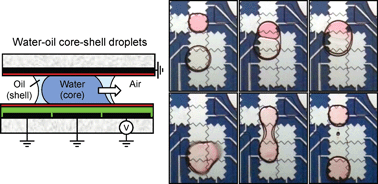Water-oil core-shell droplets for electrowetting-based digital microfluidic devices†
Abstract
Digital microfluidics based on electrowetting-on-dielectric (EWOD) has recently emerged as one of the most promising technologies to realize integrated and highly flexible lab-on-a-chip systems. In such EWOD-based digital microfluidic devices, the aqueous droplets have traditionally been manipulated either directly in air or in an immiscible fluid such as


 Please wait while we load your content...
Please wait while we load your content...